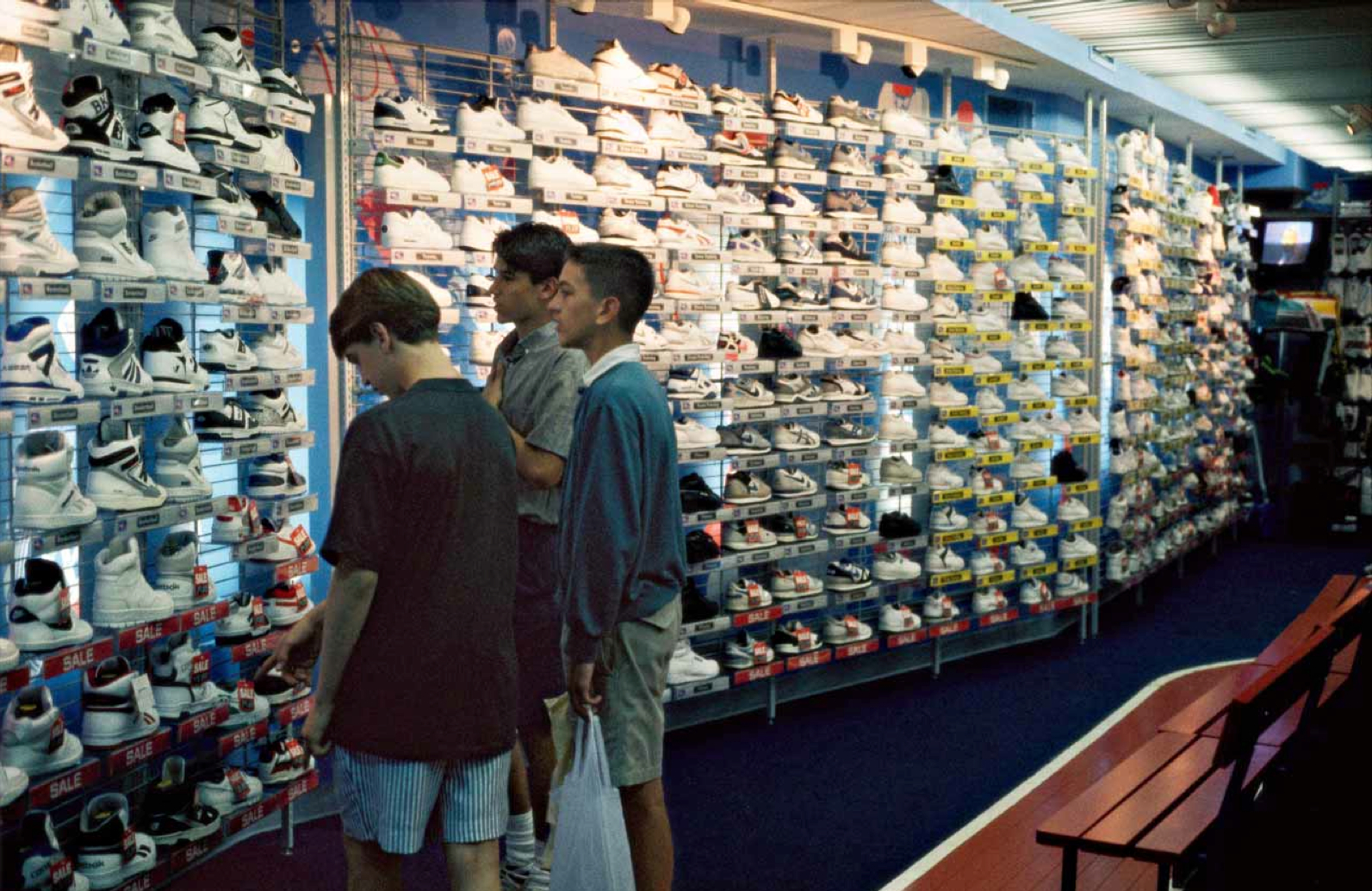09 Mar Publicizing the Privatization
A couple of weeks ago I got an email asking if I would be willing to include a photo from my mall series in a show at a Williamsburg-based gallery. I was given a description which read in part, “The artists included in this exhibition have been chosen for how their work delves the socialization of space—not as something perceived by the eye alone, but as something simultaneously lived, conceived, and perceived.” The image they wanted to use was one from Malls Across America, of some kids looking at shoes. One of the kid points at one of them.
However, I have never had the work properly printed. While I had talked with a few people about selling some of the work online, ultimately, I wanted to make sure it was done right and presented at the right time. This show immediately felt right, so I moved forward with trying to get the image retouched because the deadline for delivery was only a few days away. I was trying to get details as to what they expected but information was slow in coming. I got one image done and they wanted 5 more, then only 3 more. Finally, they settled on 2, and they are getting printed now.
I liked the description of the show, and I thought about how in some ways it related to all of our work. I also remembered a video I made on the 1st anniversary of Occupy and how it might fit into the show. This got me thinking about how connected the mall work is to the work that I made at Occupy. When I shot the mall images I was imagining the mall as the new “public” space that had been privatized. Zuccotti Park was chosen as a protest site for that reason. It is ostensibly a public space but it is owned by a private entity. It therefore involves limits to freedom of expression, that the occupation was meant to challenge. I always thought of Battle For Brooklyn as being related to the Occupy work because Battle was connected to the same abuses of power that sparked the occupy movement. However, I hadn’t made the direct connection between the mall images.
The Normalization of Force from rumur on Vimeo.
I then began to think about it in relation to our work on All The Rage and realized that way we have increasingly outsourced our healing to doctors is akin to privatizing our own personal space. When we give agency and power to others in regards to our health, we are in a sense handing them the keys and locking ourselves away from access to our own power. This may seem like a stretch, but it’s really not. Belief is central to healing. In fact, the placebo effect might be more accurately called the belief effect. When we rely on doctors to tell us how to heal, we are minimizing our belief in our body’s own capacity to take care of itself. In some ways, this can be seen as giving up freedom for tyranny out of fear. These are strong words to be sure. However, just as we want our government to help us protect ourselves while balancing a need and a desire for freedom, I think we should look to doctors to help us heal ourselves, rather than expect them to do it for us. When we give away too much power, things get out of balance very quickly.
Much of our work has been about taking an observational perspective on a situation that we have strong feelings about. However, while accepting those feelings, we also try not to let them overwhelm the observation. This is true of the all of these different works. When we observe the observers, it is an acknowledgment of how we often accept the observations of others because we don’t have the time, energy, or access to get the information we need.




No Comments